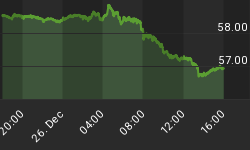The 11 March 2011 earthquake and tsunami that effectively destroyed Tokyo Electric Power Company's six-reactor Fukushima Daichi complex have claimed another victim, Japan's fast breeder reactor program.
Fukushima's effect on Japan's atomic energy program has not had the consequences of a nuclear blast, but more the relentless drip of acid rain, slowly eroding public confidence in the country's nuclear power industry, which last month saw 49 of the country's 54 nuclear power plant (NPP) reactors idled. The figure is hardly insignificant, as the nuclear power plants (NPPS) collectively generated more than 47,000 megawatts, nearly 30 percent of the country's electrical needs.
Now another nail has apparently been driven into Japan's civilian nuclear future.
On 23 February a Japan Atomic Energy Commission panel of experts reviewing Japan's nuclear fuel cycle production policy in the wake of the Fukushima debacle, while acknowledging that a fuel cycle involving a fast-breeder reactor has some advantages, concluded that for Japan it cannot be considered as a realistic option for the next two to three decades due to technological considerations.
The review is effectively a death sentence for Japan's Monju troubled $12 billion experimental fast-breeder reactor in Tsuruga, Fukui Prefecture, intended to reprocess spent nuclear reactor fuel to produce plutonium that can subsequently be recycled and reused to generate electricity. Japan had high hopes that the fast-breeder reactor program could close the loop on its nuclear fuel cycle, allowing it to reuse, recycle and produce fresh fuel for its 54 reactors. The subcommittee's report effectively ends Japan's hopes of using nuclear fuel on a near-endless cycle.
The Japan Atomic Energy Commission subcommittee commented in a draft document summarizing its discussions that the country's best option during the next 20-30 years instead of reprocessing spent nuclear fuel would be instead to recycle plutonium-uranium mixed oxide (MOX) reactor fuel. The subcommittee recommended that spent nuclear fuel be treated in the "once-through" cycle, where after it is burned in a nuclear reactor the spent fuel is buried after being used in nuclear reactors just one time rather than recycled.
The subcommittee members' viewpoints were varied, not unanimous, as Chairman Tatsujiro Suzuki told reporters that he believed that fast-breeder reactors have "extremely advantageous characteristics from a long-term viewpoint." According to the subcommittee's report, the "once-through" cycle has high economic efficiency, while MOX recycling has high efficiency of uranium use.
Given Japanese public opinion sensitivity about nuclear power in light of Fukushima, every aspect of Japan's civilian nuclear power program is more closely scrutinized than in the past, and the Monju fast-breeder reactor has had its share of problems. Construction started on the sodium-cooled, MOX-fuelled Monju fast-breeder reactor in 1986, with the reactor going critical in April 1994, but shortly after coming online the facility suffered a severe fire. Japanese officials subsequently attempted to cover up the accident, with the result that the Monju fast-breeder reactor was kept offline until 6 May 2010.
Exemplifying its problems, as of June 2011, the Monju fast-breeder reactor has only generated electricity for one hour since going critical in 1984.
Adding to the irony, Fukui Prefecture is Japan's most pro-nuclear province, housing 14 nuclear reactors. Fukushima Prefecture held a distant second place with 10 reactors. But Monju's effective mothballing ends Tokyo's vision of using fast-breeder reactors to produce more nuclear fuel than they burn, allowing for a cycle in which new nuclear fuel is created by the fast-breeder reactor, extracted, reprocessed and used anew by other NPPs.
Japan Atomic Energy Agency fast-breeder program Director General Satoru Kondo commented, "It was supposed to be the dream reactor, powering Japan for 100 or 200 years. I never thought it would take this long."
But dreams remain exactly that - dreams, with the effective loss of Monju, Japan's nuclear power industry is back to square one after more than two decades and $12 billion invested - importing nuclear fuel for its increasing contentious nuclear power generation program.
So, Japan's NPP program, for which Monju was hoped nearly to eliminate costly uranium imports, is, like Japan's other, more conventional sources of power generation, yet one source of hard currency expenditure.
Dreams die hard, some more and expensively so than others.
By John C.K. Daly of Oilprice.com
















